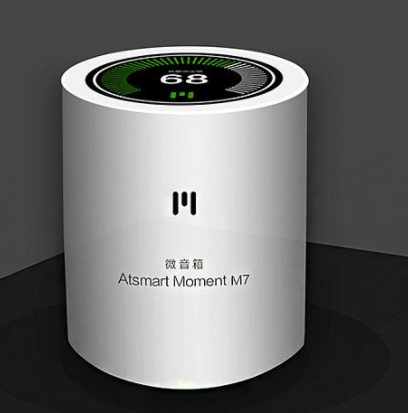Since the release of Amazon Echo in 2014, smart speakers have become increasingly popular among consumers. As artificial intelligence and voice recognition technology gradually matures, the functions of smart speakers in daily life are becoming more and more powerful. The increased acceptance of smart home products by American consumers has provided a good foundation for the popularization of smart speakers. Therefore, the United States is an early user of smart speakers, and the utilization rate in this region is close to 20%. However, the use rate of smart speakers in other parts of the world is not high, and the Chinese market has also stagnated in the past few years. But the situation may have a qualitative leap in 2018. Why is the Chinese smart speaker market lagging behind? Due to language restrictions of voice assistants, Amazon and Google's home smart speakers cannot enter the Chinese market on a large scale. On the other hand, one of the key functions of smart speakers is to serve as a center for connecting and controlling other smart home devices. The smart home market in China has only begun to take shape until recently, and it cannot maximize the use of smart speaker functions. In addition, manufacturers such as Tmall, Xiaomi, etc. that provide subsidies for smart speakers can't be accepted by consumers before they enter the market. The growth momentum of the smart speaker market According to Counterpoint statistics, the sales volume of smart speakers in China in the first ten months of 2017 was only 100,000 units. However, in the second half of 2017, the addition of large Internet technology companies such as Tmall, Xiaomi, Tencent, Baidu, and Lenovo contributed to the growth of the Chinese smart speaker market. Tmall and Xiaomi both achieved sales of 1 million units in the dual 11 Tmall Genie X1 promotion and the entry-level smart speaker Xiaomi AI Mini released in March 2018. Moderate prices are a key factor driving the development of smart speakers, especially in the consumer-sensitive Chinese market. These large technology Internet companies not only have advantages in technology, distribution and marketing, they also have sufficient financial resources to provide subsidies for most consumers to purchase products that are still in the experimental stage and seize market share in the initial stage. Although there are still many areas for improvement in current smart speakers, this price reduction promotion strategy is undoubtedly a good way to seize the share in the early stages of industry development. Therefore, the 618 shopping festival will undoubtedly start a new round of price wars and further promote smart speakers Sales in the Chinese market. status quo JD.com was the first large Chinese merchant to enter the smart speaker market. Nearly two-thirds of the speakers sold in China came from it. JD.com launched its first product, Dingdong A1, in 2015. Similar to Amazon, JD.com also intends to integrate its e-commerce services into smart speakers to collect key customer data. JD.com once occupied nearly two-thirds of the Chinese smart speaker market. Subsequently, Tmall relied on the huge advantages of its huge distribution channel network and Xiaomi joined this market with its huge IoT product ecosystem, weakening JD.com's dominant position. According to the latest survey data from Counterpoint, as of the first quarter of 2018, Tmall and Xiaomi's smart speaker mainland market shipments ranked first two, but JD.com fell to third. Xiaomi, Xiaomi ’s smart voice assistant, has learned on his smartphone to better understand customers and will also provide a better user experience for smart speaker products. Baidu launched Raven H in November 2017. Due to the high price, it did not perform well. Despite its strong performance in the field of artificial intelligence, it has always lagged behind in competition. However, Baidu, with its screen version "Xiaoyu" VS1 launched in March this year, and the new "Xiaodu" speaker priced at 89 yuan, is expected to become a major competitor in 2018 and change the market status quo.
Genki Ippai 1.0 uses high-tech temperature control, food grade pod and high-quality material device. We also upgrade to type-C interface for charging faster. We have developed various flavors for Genki Ippai Pod Systems. Up to 11 flavors provide consumers with more choices. What's more, you can use other brand`s vape pen with our vape pod.
We offer low price, high quality Disposable E-Cigarette Vape Pen,Electronic Cigarettes Empty Vape Pen, E-cigarette Cartridge,Disposable Vape,E-cigarette Accessories,Disposable Vape Pen,Disposable Pod device,Vape Pods to all over the world.
GenkiIppai Pods 1.0,Pod Systems Vape,Vape Pod Device,ZGAR GenkiIppai Pods 1.0 Pod System Vape Kit,Pod System Mini Vape Pod Device ZGAR INTERNATIONAL(HK)CO., LIMITED , https://www.zgarpods.com